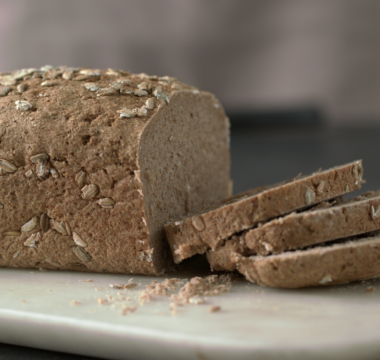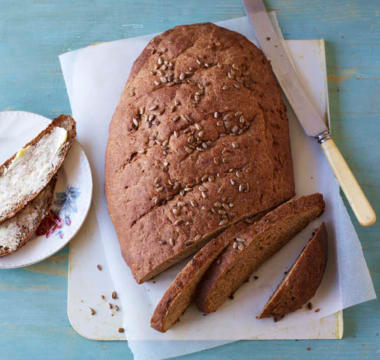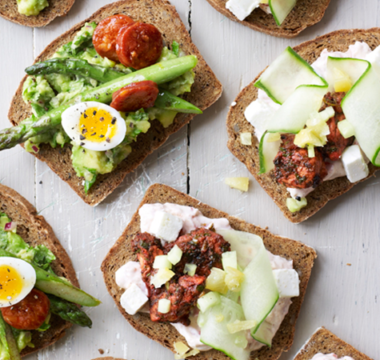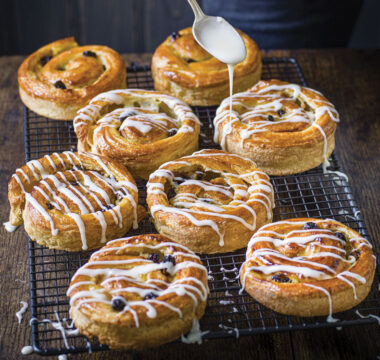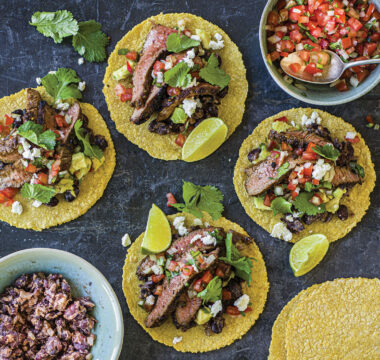Rye flour and ale give this loaf a deep golden colour and a nutty flavour. Amber ale makes the bread’s flavour warm and rounded, while stout makes it slightly smoky. The loaf tastes even better a day after baking, once the flavours have had time to mellow out.

Series 13
Series 13
- Ingredients
- Method
Method
Step 1
Mix both types of flour with the yeast and salt in a stand mixer fitted with the dough hook until combined.
Step 2
Mix the ale or stout, 50ml of the hot water, the barley malt extract or honey and the oil in a jug and pour the mixture into the dry ingredients. Mix on low speed to combine, adding more of the hot water if the mixture looks dry. Increase the speed to medium and knead for 7 minutes, until the dough is smooth and elastic.
Step 3
Tip out the dough onto a work surface and shape it into a ball. Lightly oil the bowl, return the dough, cover it with a clean tea towel and leave it to rise at room temperature for 1½ hours, until doubled in size.
Step 4
Tip out the risen dough onto a lightly floured work surface and knead it gently for 20 seconds to knock it back. Shape the dough into a neat, tight ball and place the ball on the lined baking sheet with the seam on the underside. Slide the baking sheet into the proving bag and leave the loaf to prove at room temperature for 1–1½ hours, until doubled in size.
Step 5
Heat the oven to 220°C/200°C fan/425°F/Gas 7 and heat the baker’s cloche or cast-iron Dutch oven, if using, at the same time.
Step 6
Dust the top of the risen loaf with white flour. Using a sharp knife, lame or razor blade, cut 3–4 slashes in the top of the loaf, then either slide the dough quickly into the oven on the baking sheet, or place the loaf in the hot cloche or Dutch oven. Cover with the lid.
Step 7
Bake the loaf for 35–40 minutes, until deep golden and risen, and the underside of the loaf sounds hollow when tapped. Leave to cool completely on a wire rack before slicing.
